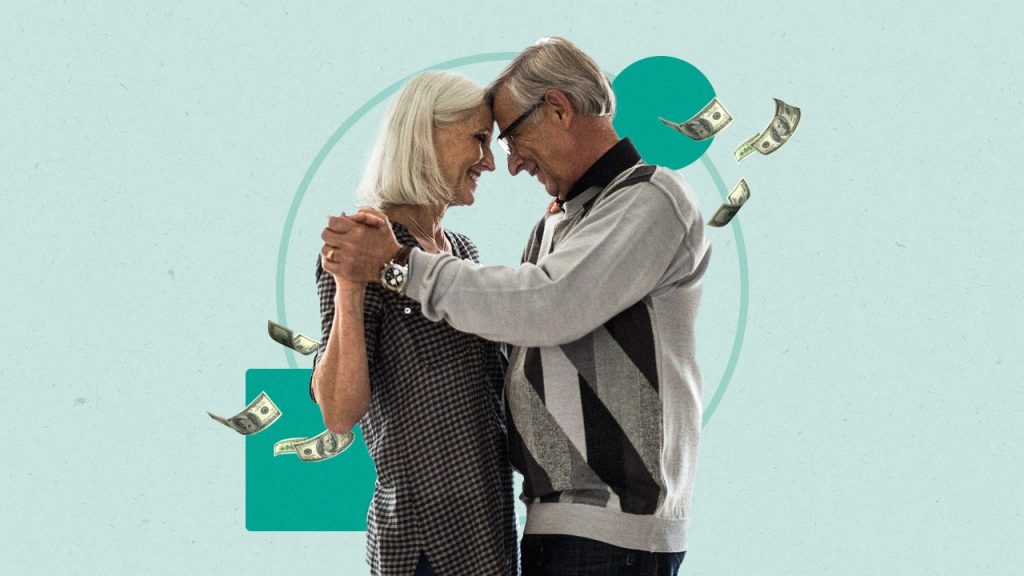A common financial struggle for Americans is deciding how much money to devote to savings versus paying down debt. While the answer varies on a case-by-case basis, it’s often important to strike a balance between the two.
Wiping out high-interest debt on a timely basis will reduce the amount of total interest you’ll end up paying, and it’ll free up money in your budget for other purposes.
On the other hand, not having enough emergency savings can lead to even more credit card debt when you’re hit with an unplanned expense. More than 2 in 5 (43 percent) of U.S. adults with a balance on their credit card say emergency or unexpected expenses are the reason for having this debt from month to month, according to Bankrate’s Credit Card Debt Survey.
While there’s no right answer for everyone on how to juggle debt repayment and saving money, here are a few scenarios for when each choice makes more sense.
Bankrate’s insights on credit card debt and savings plans
- Only 44% of Americans would pay for an unexpected expense of $1,000 or more from their savings, according to Bankrate’s Emergency Savings Report.
- 36% of people say their credit card debt is higher than the amount in their emergency savings, according to Bankrate’s Emergency Savings Report.When asked what’s a higher priority at the moment, 25% of U.S. adults surveyed said paying down debt, 28% said increasing emergency savings and 36% said focusing on both at the same time, according to Bankrate’s Emergency Savings Report.Of U.S. adults who have emergency savings at all, 59% said they’re uncomfortable with how much they have in emergency savings, according to Bankrate’s Emergency Savings Report.
- When asked the minimum amount of emergency savings it would take to feel comfortable, 89% of people responded they’d need enough to cover three months of expenses, according to Bankrate’s Emergency Savings Report.
When to make saving a priority
Here are some valid reasons for putting more of a focus on saving money than reducing debt:
Debt with a very low interest rate: Nearly half (44 percent) of American credit cardholders carry debt from month to month, according to Bankrate’s Chasing Rewards in Debt Survey. If you carry a balance that happens to be at a very low interest rate, it may make sense to save first, says Melissa Joy, a certified financial planner and founder of Pearl Planning, a financial planning and wealth management practice in Dexter, Michigan.
Access to an employer 401(k) match program: Insufficient retirement funds commonly keep people from financial security, with 41 percent citing it as a reason they’re not financially comfortable, according to Bankrate’s Financial Freedom Survey. If you have a retirement savings plan through your job, it may come with an employer match. Try to contribute at least enough to get the maximum employer match, which is essentially free money you could be missing out on.
Keep in mind: Putting off saving for retirement until you’re debt-free could cost you some valuable time. With compound interest, even small contributions to your retirement plan can grow significantly.
No emergency savings: The top reason to make saving a higher priority than paying down debt is to build your emergency fund. Over half (59 percent) of people say they’re uncomfortable with their level of emergency savings, according to Bankrate’s Emergency Savings Report. In the absence of such savings, you could simply wind up adding to your credit card debt to pay for an unexpected expense.
“If you don’t have any savings, focusing solely on paying debt can backfire when unexpected needs or costs come up,” Joy says. “You might need to borrow again, and debt can become a revolving door.”
How much should I save?
Experts recommend building an emergency fund of three to six months’ worth of expenses and stashing it in a high-yield savings account. Some even recommend putting enough cash in the bank to be able to pay your expenses for an entire year.
But you have to start somewhere. Aaron Graham, a tax planner with Holistiplan, suggests starting first with a goal to cover a single month’s expenses.
“There is no excuse for not saving for these emergencies,” Graham says. “It’s not a question of if they will happen, but when; plan accordingly.”
In the process of establishing emergency savings, it’s important to store those funds in a savings account that’s convenient and earns a competitive interest rate. Finding a top-yielding savings account means you’re getting more money in return on your savings.
Building up your emergency fund often goes hand in hand with creating and following a budget. In addition to incorporating line items into your budget for things like mortgage or rent, utilities, transportation and groceries, include line items for dollars you’ll devote to savings each month. Examples include an emergency fund, a down payment on a home or a car, or a vacation fund.
Preparing for economic challenges in 2024
A bit of advanced preparation can help you weather any difficulties you may experience this year when it comes to your income and expenses. Taking into account both personal financial habits and the larger economic landscape is crucial for making informed decisions about your debt and savings.
Interest rates took the elevator going up but will take the stairs coming down. Interest rates won’t fall fast enough to bail borrowers out of a bad situation, so continue to prioritize aggressive debt repayment rather than waiting on lower interest rates. Utilizing zero-percent balance transfer offers can jumpstart your debt repayment efforts by insulating you from high interest rates and facilitating quicker progress on paying down credit card debt.
— Greg McBride, CFA , chief financial analyst for Bankrate
It may be tempting to turn to credit cards when economic challenges arise. But relying too heavily on credit cards can quickly lead to accumulating unmanageable debt with high interest rates.
The problem of credit card debt is especially pronounced among those with lower incomes. More than half (57 percent) of cardholders with annual household incomes below $50,000 carry credit card debt; by comparison, 38 percent of those making $100,000 or more carry credit card debt, according to a Federal Reserve study.
Preparing for economic challenges and living within your means, especially during uncertain times, can be a key strategy to avoid falling into the trap of debt.
Reduced income
The odds of a recession happening between March 2024 and March 2025 is 33 percent, according to Bankrate’s Economic Indicator Survey. That’s down from 45 percent in the fourth quarter of 2023.
If you find yourself laid off from work, you can expect to spend around five to six months searching for a new job, according to some reports.
Another common enough reason for finding yourself with reduced income is switching to a new job that earns less money than your previous job brought in.
Continued high prices
Inflation rose 3.3 percent in May 2024 from a year prior, as measured by the Consumer Price Index (CPI). Last year, in May 2023, the CPI was rising by 4 percent.
Inflation has slowed, with the efforts of the Federal Reserve to slow the economy, but prices — particularly in services and housing — are still high.
Although high prices and the high cost of borrowing can eat into your budget, rates are also high on savings accounts. That means there’s a potential for you to earn more in return on your savings.
Adjusting to income reduction and price hikes
Being proactive about your finances can offer stability when faced with an increased cost of living or a reduction in income. With a healthy emergency fund, you can take on such challenges without resorting to accruing debt. Avoiding more debt can be critical given that, among those who say money has a negative impact on their mental health, 47 percent cited debt as a cause, according to Bankrate’s Money and Mental Health Survey.
If you find yourself out of a job, being able to live off money in the bank means you won’t feel the need to take on the first job opportunity that comes your way. Having a savings cushion also comes in handy in the event you decide to switch to a new job that earns less money than your previous one.
A possible loss in income will be easier to handle if you work to bring down your expenses now. One step you can take is reaching out to lenders and providers to see about lowering your monthly bills.
“It can be easy to assume that whatever amount appears on your monthly bill is set in stone, and for some municipal utilities like water and electricity that may be the case,” says Tony Wahl, a credit and loan expert at Credit Sesame in Mountain View, California. “However, sometimes subscription services like telephone, cable and internet service can be negotiated. This can help prioritize your bills and free up some of your available cash to be added to your savings.”
When to prioritize debt repayment
When you have high-interest consumer debt, paying it down first can help you solve ongoing problems with managing your money. The more you reduce your principal and the amount of interest you owe, the more money you’ll have in your budget each month to devote to savings or other line items.
Get started with repaying your debt by following these four steps:
- Calculate your expendable income. This is what’s left over after you pay for housing, utilities, transportation, food, and so on.
- List your regular expenses. Include everything from monthly bills to things you pay for less than once a month. See if there’s anything you can reduce or eliminate.
- Create a budget based on your income and expenses. Include line items for any and all monthly debt repayments.
- Identify financial goals and add them to your budget. Create line items for anything from saving for a down payment on a house to saving for a vacation.
Tara Alderete, director of enterprise learning at Money Management International, says it usually makes sense to prioritize debt reduction overall, but there are exceptions.
“If you already have adequate savings in your emergency fund, you may want to focus on quickly eliminating debt,” Alderete says. “However, if you find yourself making only minimum payments on debts with extremely high interest rates, those debts may be causing you to lose money and preventing you from achieving your overall financial goals, and you may want to focus on paying off that costly debt.”
As Alderete sees it, an important part of building a budget is focusing on your priority expenses first, so that you can free up money to put toward a debt reduction plan while hopefully still being able to contribute to an emergency fund.
When to pay debt first
- If your debts have high interest rates that can snowball if not paid off.
- If your debt is causing you significant stress or anxiety.
- If a large portion of your income is going toward monthly debt payments and limiting financial flexibility.
You can use a debt management calculator to determine how much you should contribute to pay off your debt.
Next steps to balance your savings and debt
When it comes to debt repayment, choose a strategy that works best for you. Options include paying off your highest-interest debt first, paying off the smallest debt first or paying the debts first that most affect your credit score.
Debt consolidation may be a good idea if you have multiple high-interest debts. Combining them into one new loan can help you qualify for a lower interest rate, and it conveniently allows you to combine multiple payments into one.
Building up your savings each month as you pay down debt ensures you’ll have funds on hand to cover unplanned expenses that would otherwise put you deeper into debt.
For many, the best solution is to strike a balance between saving money and paying off debt.
“The choice of debt repayment or savings is not an either-or proposition,” says Greg McBride, CFA, Bankrate’s chief financial analyst. “You can, and should, focus on both at the same time. Automate savings right off the top through payroll deduction and direct deposit, then use take-home pay to maximize the debt repayment effort. A savings cushion is the buffer between you and more high-cost debt when unplanned expenses arise, and time is your greatest ally when saving for longer range goals, so don’t delay getting started on savings.”
Bottom line
Finding the right balance between debt repayment and saving is vital for financial stability. By creating a budget and setting goals, you can effectively manage your finances and prepare for potential financial challenges. It’s also important to regularly reassess and adjust your plan as needed. It’s never too late to start saving and paying off debt. The key is to take action and stay consistent.
–Bankrate’s Sheiresa McRae Ngo updated this article.
Read the full article here










